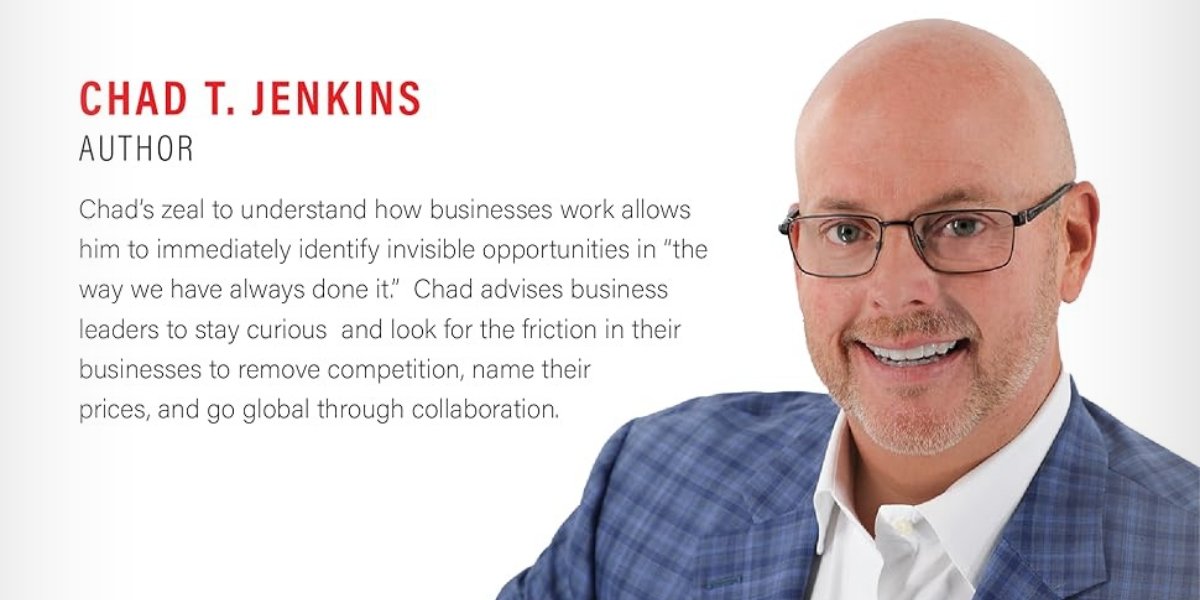By: Dr. Connor Robertson
Introduction
Many business owners wait until it’s too late to begin preparing for an exit. They may assume they’ll receive a favorable price when they’re “ready.” Some think buyers will recognize the potential, while others believe their brand alone will justify a premium. However, this often isn’t the case. Strategic exits are typically determined long before you enter the market. From my experience working with private equity firms, real estate groups, and service-based founders, the biggest opportunities arise from positioning the business properly, not just managing it efficiently.
Whether you’re selling to a private equity firm, a competitor, or a strategic buyer, how you position your business can have a significant impact on:
- Valuation
- Terms
- Timing
- Buyer interest
- Retained equity
- Earn-outs
- Legacy control
This article provides a step-by-step approach to help get your business exit-ready within 24 months.
What Is an Exit Package?
An exit package encompasses all the materials and documentation a buyer evaluates when considering your company.
It’s more than just a pitch deck or teaser.
It’s how your business:
- Presents itself through financial data
- Justifies its multiple
- Tells its growth story
- Demonstrates its infrastructure
- Positions its future
- Manages its risks
This package lays the foundation for:
- Confidential Information Memorandums (CIMs)
- Buyer interviews
- LOI negotiations
- Due diligence periods
- Legal drafting
- Closing and transition
A well-prepared package gives you greater leverage in negotiations.
Why Start 24 Months Out?
There are three key reasons:
You Can Clean Up the Books
Many founders don’t realize how disorganized their financials are until due diligence starts.
Some common issues include:
- Owner perks
- One-off expenses
- Blended P&L lines
- Lack of accrual accounting
- Misreported COGS
- No cash vs. accrual distinction
You’ll need at least two years of clean, normalized books to present. This often requires a proactive CPA and at least 12 months of adjustments.
You Can Recast the Team
If your business is overly reliant on you, your COO, a family member, or a single rainmaker, potential buyers might hesitate.
Use this time to:
- Build an organizational chart
- Create Standard Operating Procedures (SOPs)
- Document roles and responsibilities
- Transition client relationships
- Assign operational ownership
The more independent your business is from its owner, the more appealing it becomes to buyers.
You Can Engineer the Narrative
Buyers are interested not only in past performance but also in potential.
Use the next 24 months to:
- Launch new products or channels
- Systematize customer acquisition strategies
- Secure multi-year contracts
- Implement recurring revenue models
- Refresh your brand
- Eliminate less profitable customers
These strategic moves help craft a more compelling narrative for potential buyers.
The Exit Preparation Timeline
Let’s break the preparation process into four 6-month phases:
Phase 1: Strategic Audit (Months 1–6)
Objectives:
- Understand where you stand
- Create baseline reports
- Address financial blind spots
Key Actions:
- Hire an exit-focused CPA and fractional CFO
- Build accrual-based financials for the past 24 months
- Create a trailing 12-month P&L and balance sheet
- Identify add-backs and discretionary expenses
- Establish your valuation baseline
- Identify low-margin clients or services
- Build your exit “war room” (e.g., a GDrive or Dropbox folder with all company docs)
Narrative Outcome:
You will have a clear understanding of your business’s current value, areas in need of improvement, and how a buyer might perceive your business today.
Phase 2: Infrastructure Optimization (Months 7–12)
Objectives:
- Build the business to operate independently of you
- Address potential buyer objections
- Secure retention drivers
Key Actions:
- Create SOPs for all key processes
- Organize contracts, leases, IP, and corporate documents
- Audit HR compliance and payroll
- Move off legacy software to scalable platforms
- Implement CRM and internal dashboards
- Start transitioning key relationships from founder to team
- Document customer success and retention plans
- Identify and highlight repeatable lead sources
Narrative Outcome:
Your business shifts from being “personality-led” to “process-led,” a critical valuation driver, particularly in industries like real estate, private equity, and marketing.
Phase 3: Growth Narrative (Months 13–18)
Objectives:
- Boost top-line revenue
- Improve EBITDA margins
- Add strategic proof points
Key Actions:
- Raise prices or reduce the cost of goods sold
- Bundle services or productize for efficiency
- Secure long-term customer contracts
- Acquire a small competitor
- Launch new lead generation sources or revenue channels
- Pilot a recurring revenue product
- Develop a monthly financial dashboard
- Increase thought leadership through LinkedIn and press appearances
Narrative Outcome:
Your business will have established momentum and scalability, qualities that buyers find appealing.
Phase 4: Go-to-Market Prep (Months 19–24)
Objectives:
- Prepare your materials
- Select intermediaries or direct buyers
- Get ready for due diligence
Key Actions:
- Work with an advisor or banker to create a 20+ page CIM
- Create a 5-year forecast with supporting details
- Write your founder memo and buyer vision letter
- Identify and interview potential buyers
- Develop buyer qualification questions
- Engage M&A legal counsel
- Prepare for Q of E review (Quality of Earnings)
Narrative Outcome:
You will be well-prepared to receive offers, negotiate terms, and close the deal successfully.
What Buyers Want
Many sellers assume that buyers prioritize growth above all else. While growth is important, it’s only part of the picture.
Buyers often look for:
- Predictable cash flow
- Scalable systems
- Well-documented and clean financials
- Management continuity or a replacement plan
- A clear story and roadmap
- Low customer concentration
- Barriers to entry or competitive advantages
- Growth potential
If you can present a business with these characteristics, it will likely have a more attractive valuation.
Building the Exit Data Room
Your digital war room should contain:
- Corporate formation documents
- Ownership structure and cap table
- 3 years of tax returns
- Full financials (monthly and annual)
- Customer lists and contracts
- Employee agreements
- Insurance documents
- IP and trademarks
- Software subscriptions
- SOPs and org charts
- Legal disputes or pending matters
- Asset list and depreciation schedules
- Loan documents and leases
- Vendor agreements
It’s ideal to organize these documents well in advance, not during the due diligence process.
Working with the Right Advisors
To optimize your exit strategy, consider assembling a team of advisors, including:
- Exit-Ready CPA – To normalize your books
- M&A Attorney – To handle LOIs and APA drafting
- Transaction Advisor or Banker – To find and vet potential buyers
- Wealth Manager – To plan post-exit allocations
- PR/Positioning Help – To tell your story to the market
Working with experienced advisors increases the likelihood of attracting high-caliber buyers.
Strategic vs. Financial Buyers
It’s important to distinguish between different types of buyers:
Financial Buyer:
- Focuses on EBITDA
- Looks to improve systems
- May use leverage
- Might want you to stay on post-close
Strategic Buyer:
- Focuses on synergies
- Buys customers, team, brand, or intellectual property
- Typically willing to pay a premium
- May absorb and replace operations
If you start preparing early, you can position your business to appeal to both types of buyers. At www.drconnorrobertson.com, I work with founders to target the buyer type that aligns with their long-term goals, post-close plans, and wealth needs.
Final Thoughts from Dr. Connor Robertson
Exits aren’t purely about timing. They require careful preparation and strategy. To achieve a strategic outcome, consider the following:
- Understand your numbers
- Build operational independence
- Clean up your books
- Craft a compelling growth narrative
- Attract multiple buyers
- Defend your valuation with solid documentation
- Remain professional during due diligence
- Seek world-class advisory support
The most successful exits I’ve been involved with were shaped years before they hit the market.
If you’re 24 or even 36 months away from selling, now is the time to start preparing.
At www.drconnorrobertson.com, I help founders develop these timelines, war rooms, and narratives across real estate, marketing, and private equity-backed service businesses. Because the reality is: You don’t always get the exit you deserve—you get the exit you’ve prepared for.
Disclaimer: The information provided in this article is for informational purposes only and reflects Dr. Connor Robertson’s general approach to business exit planning. It is not intended as professional advice, nor does it guarantee any specific results. The success of an exit strategy depends on various factors, including market conditions, individual circumstances, and the unique characteristics of each business. Readers are encouraged to consult with qualified professionals, such as accountants, attorneys, and financial advisors, before making any decisions related to their business exit strategy.













